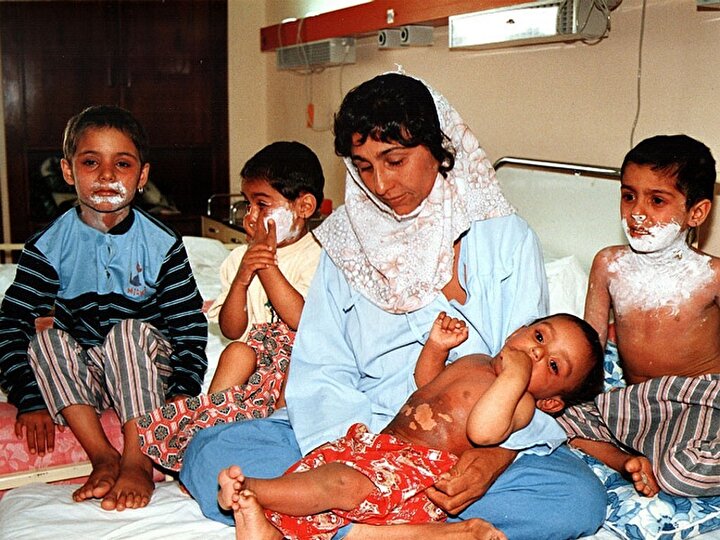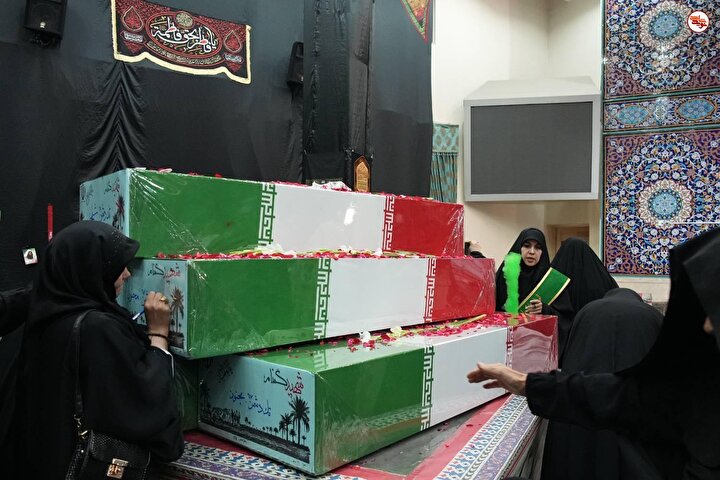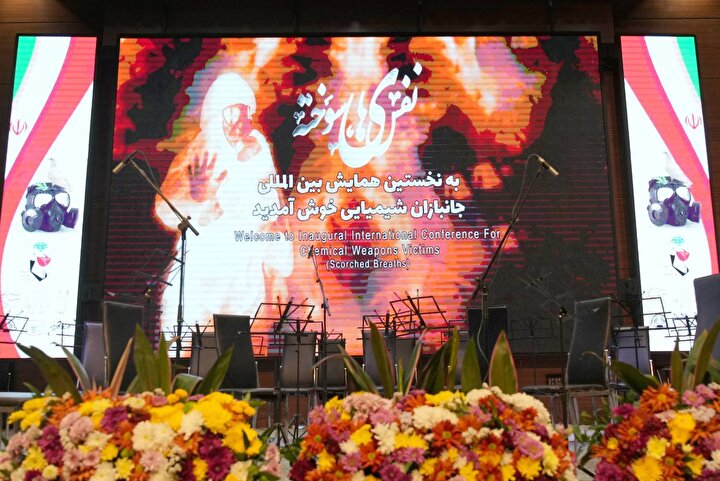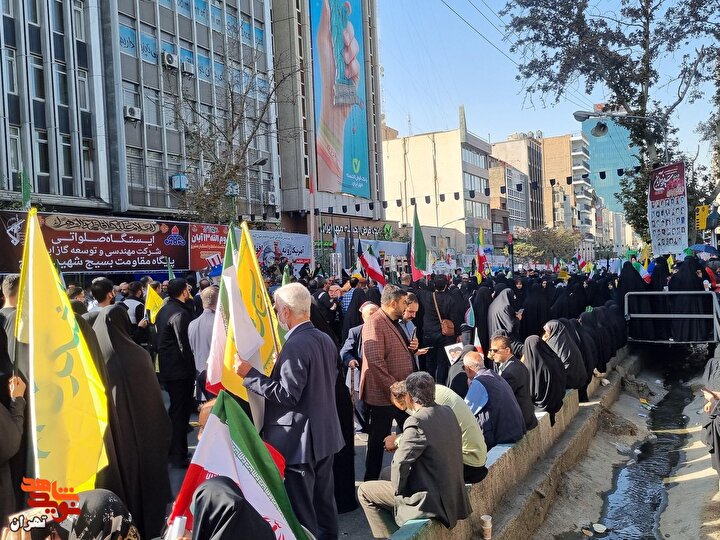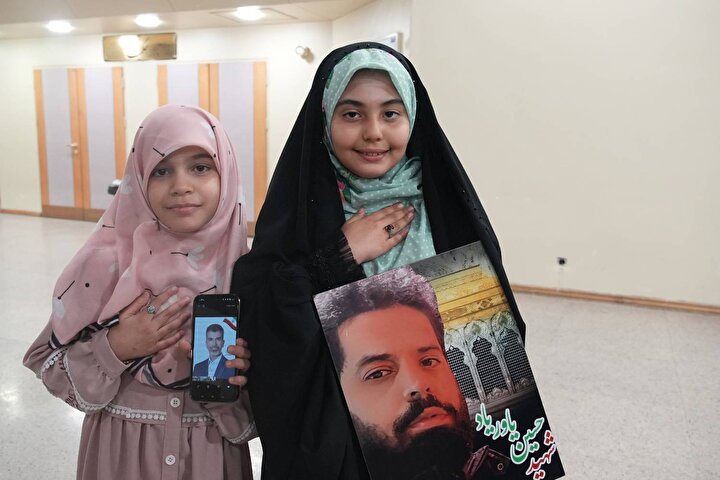
Saddam's Phone Call to MKO Head after the Assassination of Martyr Sayad Shirazi
Navideshahed: Brigadier General Gholam Hussein Darbandi, one of the comrades of martyr Sayad Shirazi said: “Martyr Sayad Shirazi liked martyrdom so much.”?

According to Navideshahed quoting the Iranian Student’s News Agency (ISNA), Commander Brigadier General Gholam Hussein Darbandi pointed out to this issue that since 1993 he had served to martyr commander Lieutenant General Sayad Shirazi and he described: “The anti-revolutionary militants during the first announcement after the martyrdom of martyr Sayad Shirazi said: “We killed the iron man of Iran.”? Saddam Hussein telephoned Masoud Rajavi immediately and he congratulated the martyrdom of Sayad to him and he had said that he had received some documents that Saddam Hussein had said the case of this young commander had been on his table until the final minute.”?
He outlined: “Martyr Sayad Shirazi before the war was doing some activities in Kurdistan including the renovation of some regions that had been damaged or collapsed by the anti-revolutionary militants. He directed his forces and to push back the anti-revolutionary militants from the cities of Sardasht, Baneh, Piranshahr, Marivan and other cities.”?
Commander Darbandi said: “The first work of martyr after the revolution under the commandership of Army Ground Force was that he took the headquarters of Ground Force to the closest part of the frontier that was Ahvaz city at that time. On the other hand, martyr Sayad in order to create spiritual unity among the forces, he would always emphasize that the Army and Islamic Revolutionary Guards corps are in the same Army.”?
He continued: “The unity of this procedure which had been created by martyr Sayad indicated their sign during the first operation after entering the battlefields (the military operation Tariq Al-Quds) which took place in 1981 and it was the unity sign that would be mentioned as the sacred unity by the martyr.”?
Commander Darbandi notified: “Martyr Sayad Shirazi created a board that was named the board of war knowledge and the activities of this board had been focused on extracting knowledge from the war.”?
He also pointed out to this issue that after the martyrdom of martyr Sayad, the board was renamed to the War Knowledge Board of Martyr Lieutenant General Sayad Shirazi and he added: “The work of this board was in this form that the commanders of all the forces including the Army, Corps, Basij and even the Jihadists and clerics would take part and they would review and study the events of war so cautiously.”?
Commander Darbandi pointed out to this issue that the stated issues are recorded in three forms of video, written and audio and he outlined: “These could be considered as useful sources for the researchers of Sacred Defense Era and they are available for the public as well.”?
In a section of his speech he outlined: “The intellectual character of our war has caused a victory during the Sacred Defense Era and each time that we asked questions from martyr Sayad Shirazi regarding its reasons, he would respond that each success that we have gotten is due to prayer on time. The second outstanding characteristic that he had was obeying the supreme leader and Islamic Guardianship without saying why and for what reason. At the end this great commander of Islam was martyred and after the martyrdom of this great commander, the Iranian supreme leader he personally kissed his forehead as well.”?
The End
According to Navideshahed quoting the Iranian Student’s News Agency (ISNA), Commander Brigadier General Gholam Hussein Darbandi pointed out to this issue that since 1993 he had served to martyr commander Lieutenant General Sayad Shirazi and he described: “The anti-revolutionary militants during the first announcement after the martyrdom of martyr Sayad Shirazi said: “We killed the iron man of Iran.”? Saddam Hussein telephoned Masoud Rajavi immediately and he congratulated the martyrdom of Sayad to him and he had said that he had received some documents that Saddam Hussein had said the case of this young commander had been on his table until the final minute.”? He outlined: “Martyr Sayad Shirazi before the war was doing some activities in Kurdistan including the renovation of some regions that had been damaged or collapsed by the anti-revolutionary militants. He directed his forces and to push back the anti-revolutionary militants from the cities of Sardasht, Baneh, Piranshahr, Marivan and other cities.”? Commander Darbandi said: “The first work of martyr after the revolution under the commandership of Army Ground Force was that he took the headquarters of Ground Force to the closest part of the frontier that was Ahvaz city at that time. On the other hand, martyr Sayad in order to create spiritual unity among the forces, he would always emphasize that the Army and Islamic Revolutionary Guards corps are in the same Army.”? He continued: “The unity of this procedure which had been created by martyr Sayad indicated their sign during the first operation after entering the battlefields (the military operation Tariq Al-Quds) which took place in 1981 and it was the unity sign that would be mentioned as the sacred unity by the martyr.”? Commander Darbandi notified: “Martyr Sayad Shirazi created a board that was named the board of war knowledge and the activities of this board had been focused on extracting knowledge from the war.”? He also pointed out to this issue that after the martyrdom of martyr Sayad, the board was renamed to the War Knowledge Board of Martyr Lieutenant General Sayad Shirazi and he added: “The work of this board was in this form that the commanders of all the forces including the Army, Corps, Basij and even the Jihadists and clerics would take part and they would review and study the events of war so cautiously.”? Commander Darbandi pointed out to this issue that the stated issues are recorded in three forms of video, written and audio and he outlined: “These could be considered as useful sources for the researchers of Sacred Defense Era and they are available for the public as well.”? In a section of his speech he outlined: “The intellectual character of our war has caused a victory during the Sacred Defense Era and each time that we asked questions from martyr Sayad Shirazi regarding its reasons, he would respond that each success that we have gotten is due to prayer on time. The second outstanding characteristic that he had was obeying the supreme leader and Islamic Guardianship without saying why and for what reason. At the end this great commander of Islam was martyred and after the martyrdom of this great commander, the Iranian supreme leader he personally kissed his forehead as well.”? The End
